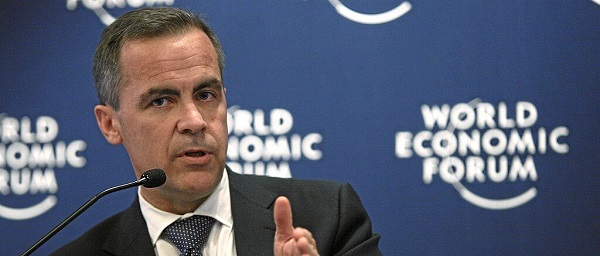International
UN committee urges Canada to repeal euthanasia for non-terminally ill patients

From LifeSiteNews
The UN Committee on the Rights of Persons with Disabilities has warned against Canada’s euthanasia program, urging the repeal of legislation that allows the killing of non-terminally ill individuals.
Canada’s euthanasia regime has become too radical even for the anti-life United Nations, who recently called on the nation to repeal its law allowing non-terminally ill patients to qualify for death through the state’s “Medical Assistance in Dying” program.
In closing remarks published March 21, the UN Committee on the Rights of Persons with Disabilities argued that Canada should repeal its 2021 MAID expansion legislation that allowed those who are chronically ill but not terminally ill to be put to death by the state.
The committee said that Canada’s regime “establishes medically assisted dying for persons with disabilities based on negative, ableist perceptions of the quality and value of the life of persons with disabilities, including that ‘suffering’ is intrinsic to disability rather than the fact that inequality and discrimination cause and compound ‘suffering’ for persons with disabilities.”
It pointed out that “the concept of ‘choice’ creates a false dichotomy by setting up the premise that if persons with disabilities are suffering, it is valid for the State Party to enable their death.”
In Canada, euthanasia is divided into Track 1 and Track 2 requests. Track 1 requests deal with those whose death is allegedly imminent or foreseeable. Track 2 requests deal with those who are not terminally ill but have lost the will to live due to their having chronic health problems.
The UN committee took specific issue with Track 2 MAID, writing that it is “extremely concerned about the 2021 amendments to the State Party’s Criminal Code through Bill C-7 that expanded the eligibility criteria for obtaining Medical Assistance in Dying (MAID), known as ‘Track 2’ MAiD by removing the ‘foreseeable death’ criteria.”
The committee further recommended that Canada not euthanize its citizens for mental health reasons and abandon additional expansions of the program. Such an expansion is slated to come into effect in 2027.
It is worth noting that while Track 2 cases of MAID are indeed evil, so are Track 1 cases. The Catholic Church infallibly teaches that euthanasia is a grave evil tantamount to murder and must be rejected in all circumstances.
The UN committee’s criticism of Canada’s euthanasia regime comes after many have pointed out that the regime has spawned a culture of death and eugenics in the country, with the disabled and the poor often being those who request or who are even suggested to request death via Track 2 MAID.
In one case, a Nova Scotia grandmother revealed that doctors repeatedly offered her euthanasia while she underwent cancer treatment, making her feel as though she was “better off dead.”
“I felt like a problem that needed to be [gotten] rid of instead of a patient in need of treatment,” she said. “I don’t want to be asked if I want to die.”
Similarly, in May of last year, LifeSiteNews reported on a Canadian man who felt “completely traumatized” and violated that he was offered MAID “multiple times” instead of getting the proper care he needed while in the hospital.
The most recent reports show that MAID is the sixth highest cause of death in Canada. However, it was not listed as such in Statistics Canada’s top 10 leading causes of death from 2019 to 2022.
When asked why MIiD was left off the list, the agency said that it records the illnesses that led Canadians to choose to end their lives via euthanasia, not the actual cause of death, as the primary cause of death.
According to Health Canada, in 2022, 13,241 Canadians died by MAID lethal injections. This accounts for 4.1 percent of all deaths in the country for that year, a 31.2 percent increase from 2021.
conflict
US airstrike on Iran’s nuclear facilities. Was it obliteration?
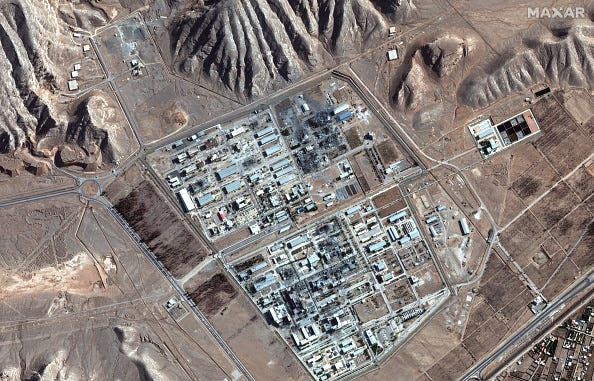
A satellite image of the Isfahan nuclear research center in Iran shows visible damage to structures and nearby tunnel entrances from recent US airstrikes. / Satellite image (c) 2025 Maxar Technologies.
 Seymour Hersh
Seymour Hersh
The US attack on Iran may not have wiped out its nuclear ambitions but it did set them back years
I started my career in journalism during the early 1960s as a reporter for the City News Bureau of Chicago, a now long-gone local news agency that was set up by the Chicago newspapers in the 1890s to cover the police and fire departments, City Hall, the courts, the morgue, and so on. It was a training ground, and the essential message for its aspiring reporters was: “If your mother says she loves you, check it out.”
It was a message I wish our cable networks would take to heart. CNN and MSNBC, basing their reporting on an alleged Defense Intelligence Agency analysis, have consistently reported that the Air Force raids in Iran on June 22 did not accomplish their primary goal: total destruction of Iran’s nuclear-weapons capacity. US newspapers also joined in, but it was the two nominally liberal cable channels, with their dislike—make that contempt—for President Donald Trump, that drove the early coverage.
There was no DIA analysis per se. All US units that engage in combat must file an “after-action report” to the DIA after a military engagement. In this case, the report would have come from the US Central Command, located at MacDill Air Force base in Tampa, Florida. CENTCOM is responsible for all US military operations in the Middle East, Egypt, Central Asia, Afghanistan, and Pakistan. One US official involved in the process told me that “the first thing out of the box is you have to tell your boss what happened.” It was that initial report of the bombing attack that was forwarded to DIA headquarters along the Potomac River in Washington and copied or summarized by someone not authorized to do so and sent to the various media outlets.
The view of many who were involved in the planning and execution of the mission is that the report was summarized and leaked “for political purposes”—to cast immediate doubt on the success of the mission. The early reports went so far as to suggest that Iran’s nuclear program has survived incapacitation by the attack. Seven US B-2 “Spirit” bombers, each carrying two deep-penetration “bunker-busters” weighing 30,000 pounds, had flown without challenge from their base in Missouri to the primary target: Iran’s Fordo nuclear facility, concealed deep inside a mountain twenty miles north of the city of Qom.
The planning for the attack began with the knowledge that the main target—the working area of the nuclear program—was buried at least 260 feet below the rocky surface at Fordo. The gas centrifuges spinning there were repeatedly enriching uranium, in what is known as a cascade, not to weapons-grade level—uranium-235 isotopes enriched to 90 percent—but to 60 percent. Further processing to create weapons grade uranium, if Iran chose to do so, could be done in a matter of weeks, or less. The Air Force planning group had also been informed before the bombing raid, most likely by the Israelis, who have a vast spy network in Iran, that more than 450 pounds of the enriched gas stored at Fordo had been shipped to safety at another vital Iranian nuclear site at Isfahan, 215 miles south of Tehran. Isfahan was the only known facility in Iran capable of converting the Fordo gas into a highly enriched metal—a critical early stage of building the bomb. Isfahan also was a separate target of the US attack on Fordo, and was pulverized by Tomahawk missiles fired by a U.S. submarine operating in the Gulf of Aden, off Yemen.
As a journalist who for decades has covered the nascent nuclear crisis in the Middle East, it seemed clear to me and to informed friends I have in Washington and Israel that if Fordo somehow survived its bunker-buster attack, as was initially suggested, and continued to enrich more uranium, Isfahan would not. No enrichment, no Iranian bomb.
I’ve been frustrated and angry at cable news coverage for years, and that includes Fox News, too, and decided to try and find the real story. If your mother says she loves you, check it out. And I checked out enough of it to share.
I was told that “the first question for the American planners was how big was the actual workspace at Fordo? Was it a structure? We had to find that out before we got rid of it.” Some of the planners estimated that the working space “was the size of two hockey rinks: 200 feet long and 85 feet wide.” It came to 34,000 square feet. The height of the underground working space was assumed to be ten-and-a-half feet—I was not told the genesis of that assumption—and the size of the target was determined to be 357,000 cubic feet.
The next step was to measure the power of the dozen or more bunker-busters that were planned to be “carefully spaced and dropped” by the US B-2 bombers, using the most advanced guidance systems. (During one high-level session in Washington, one of the Air Force planners was asked what would happen if the B-2’s guidance systems were corrupted by an outside signal. “We’d miss the target” was the answer.)
I was assured that even if the rough estimate of the working space at Fordo was far off, the bombers targeting Fordo each carried a 30,000-pound bomb with an explosive payload of as much as five thousand pounds, which was more than enough to pulverize the mythical hockey rinks, or even a much larger working space.
Some of the bombs were also outfitted with what is known as a hard target void sensing fuze, which enabled the bombs to penetrate multiple layers of a site like Fordo before detonating. This would maximize the destructive effect. Each bomb, dropped in sequence, would create a force of rubble that would cause increasing havoc in the working areas deep inside the mountain.
“The bombs made their own hole. We built a 30,000-pound steel bullet,” the official told me, referring with pride to the bunker-busters.
Most important, he said, was that there were no post-strike hints detected of radioactivity—more evidence that the 450 pounds of enriched uranium had been moved from Fordo to the reprocessing site at Isfahan prior to the US attack there, which was code-named “Midnight Hammer.” That operation included a third US strike at yet another nuclear facility at Natanz.
“The Air Force got everything on the hit list,” the official told me. “Even if Iran rebuilds some centrifuges, it will still need Isfahan. There is no conversion capability without it.”
Why not, I asked, tell the public about the success of the raid and the fact that Iran no longer has a potential nuclear weapon?
The answer: “There will be a top-secret report about all of this, but we don’t tell people how hard we work. We tell the public what we think it wants to hear.”
The US official, asked about the future of the Iranian nuclear program, quickly acknowledged that “there is a communication problem” when it comes to the fate of the program.
The intent of the strike planners, he said, “was to prevent the Iranians from building a nuclear weapon in the near term—a year or so—with the hope they would not try again. The clear understanding was that there was no expectation to ‘obliterate’ every aspect of their nuclear program. We don’t even know what that is.
“Obliteration means the glass—[eliminating] Iran’s nuclear program—is full. The planning and the results are the glass is half-full. For Trump critics, the results are the glass is half-empty—the centrifuges may have survived and four hundred pounds of 60 percent enriched uranium are missing. The bombs could not be assured to penetrate the centrifuge chamber . . . too deep, but they could cover them up [with rocks and other bomb debris] and in the process cause unknown damage to them.
“Whether the 60 percent [enriched uranium] was there or not is irrelevant because without centrifuges they cannot refine it to weapons grade. Add to this the research and refinement and conversion from gas to metal—required for a bomb—at Isfahan are also gone.
“Results? Glass is half-full . . . a couple of years of respite and uncertain future. So now Trump’s defense is Full Glass. Critics? Half-empty. Reality? Half-full. There you are.”
The immediate beneficiary of the use of US force in Iran will not be a more placid Middle East, but Israel, and Prime Minister Benjamin Netanyahu. The Israeli Air Force and army are still killing massive numbers of Palestinians in Gaza.
There remains no evidence that Iran was on the cusp of becoming a nuclear power. But as the world has known for decades, Israel maintains a significant nuclear arsenal that it officially claims does not exist.
This is a story not about the bigger picture, which is muddled, but about a successful US mission that was the subject of a lot of sloppy reporting because of a reviled president. It would have been a breakthrough had anyone in the mainstream press spoken or written about the double standard that benefits Israel and its nuclear umbrella, but in America that remains a taboo.
Subscribe to Seymour Hersh.
For the full experience, upgrade your subscription.
C2C Journal
Canada Desperately Needs a Baby Bump

The 21 st century is going to be overshadowed by a crisis that human beings have never faced before. I don’t mean war, pestilence, famine or climate change. Those are perennial troubles. Yes, even climate change, despite the hype, is nothing new as anyone who’s heard of the Roman Warm Period, the Mediaeval Warm Period or the Little Ice Age will know. Climate change and the others are certainly problems, but they aren’t new.
But the crisis that’s coming is new.
The global decline in fertility rates has grown so severe that some demographers now talk about “peak humanity” – a looming maximum from which the world’s population will begin to rapidly decline. Though the doomsayers who preach the dangers of overpopulation may think that’s a good development, it is in fact a grave concern.
In the Canadian context, it is doubly worrisome. Our birth rates have been falling steadily since 1959. It was shortly after that in the 1960s when we began to build a massive welfare state, and we did so despite a shrinking domestically-born population and the prospect of an ever-smaller pool of taxable workers to pay for the expanding social programs.
Immigration came to the rescue, and we became adept at recruiting a surplus population of young, skilled, economically focused migrants seeking their fortune abroad. The many newcomers meant a growing population and with it a larger tax base.
But what would happen if Canada could no longer depend on a steady influx of newcomers? The short answer is that our population would shrink, and our welfare state would come under intolerable strain. The long answer is that Canadian businesses, which have become addicted to abundant, cheap foreign labour through the Temporary Foreign Worker Program, would be obliged to invest in hiring, training and retaining Canadian workers.
Provincial and federal governments would scramble to keep older Canadians in the workforce for longer. And governments would be torn between demands to cut the welfare state or privatize large parts of it while raising taxes to help pay for it.
No matter what, the status quo won’t continue. And – even though Canada is right now taking in record numbers of new immigrants and temporary workers – we are going to discover this soon. The main cause is the “peak humanity” that I mentioned before. Fertility rates are falling rapidly nearly everywhere. In the industrialized West, births have fallen further in some places than in others, but all countries are now below replacement levels
(except Israel, which was at 2.9 in 2020).
Deaths have long been outpacing births in China, Japan and some Western countries like Italy. A recent study in The Lancet expects that by 2100, 97 percent of countries will be shrinking. Only Western and Eastern sub-Saharan Africa will have birth rates above replacement levels, though births will be falling in those regions also.
In a world of sub-replacement fertility, there will still be well-educated, highly skilled people abroad. But there will not be a surplus of them. Some may still be ready and willing to put down roots in Canada, but the number will soon be both small and dwindling. And it seems likely that countries which have produced Canada’s immigrants in recent years will try hard to retain domestic talent as their own populations decline. In contrast, the population of sub-Saharan Africa will be growing for a little longer. But unless education and skills-training change drastically in that region, countries there will not produce the kind of skilled immigrants that Canada has come to rely on.
And so the moment is rapidly approaching when immigration will no longer be able to make up for falling Canadian fertility. Governments will have to confront the problem directly—not years or decades hence, but now.
While many will cite keeping the welfare state solvent as the driving force, in my view this is not the reason to do it. The reason to do it is that it is in Canada’s national interest to make it easier for families to have the number of children that they want. A 2023 study by the think-tank Cardus found that nearly half of Canadian women at the end of their reproductive years had fewer children than they had wanted. This amounted to an average
of 0.5 fewer children per woman – a shortfall that would lift Canada close to replacement level.
The United Nations Population Fund (UNPF) has noticed the same challenge on a global scale. Neither Cardus nor the UNPF prescribes any specific solutions, but their analysis points to the same thing: public policy should focus on identifying and removing barriers families face to having the number of children they want.
Every future government should be vigilant against impediments to family-formation and raising a desired number of children. Making housing more abundant and affordable would surely be a good beginning. Better planning must go into making livable communities (not merely atomized dwellings) with infrastructure favouring families and designed to ease commuting. But more fundamentally, policy-makers will need to ask and answer an uncomfortable question: why did we allow barriers to fertility to arise in the first place?
The original, full-length version of this article was recently published in C2C Journal.
Michael Bonner is a political consultant with Atlas Strategic Advisors, LLC, contributing editor to the Dorchester Review, and author of In Defense of Civilization: How Our Past Can Renew Our Present.
-
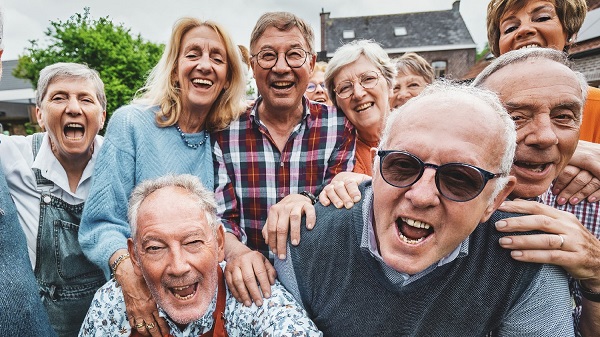
 Bruce Dowbiggin2 days ago
Bruce Dowbiggin2 days agoCanada Day 2025: It’s Time For Boomers To Let The Kids Lead
-

 Agriculture2 days ago
Agriculture2 days agoCanada’s supply management system is failing consumers
-
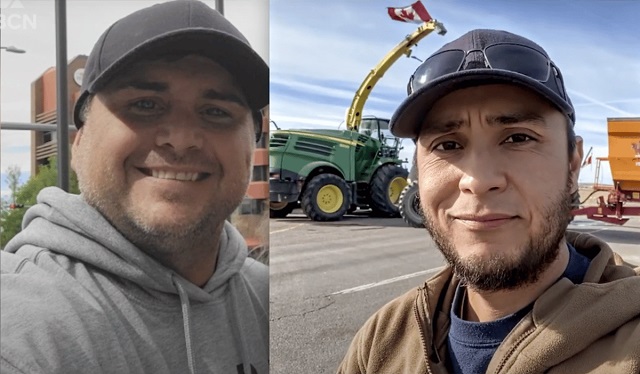
 Alberta24 hours ago
Alberta24 hours agoCOVID mandates protester in Canada released on bail after over 2 years in jail
-

 armed forces20 hours ago
armed forces20 hours agoCanada’s Military Can’t Be Fixed With Cash Alone
-

 Business2 days ago
Business2 days agoPrairie provinces and Newfoundland and Labrador see largest increases in size of government
-
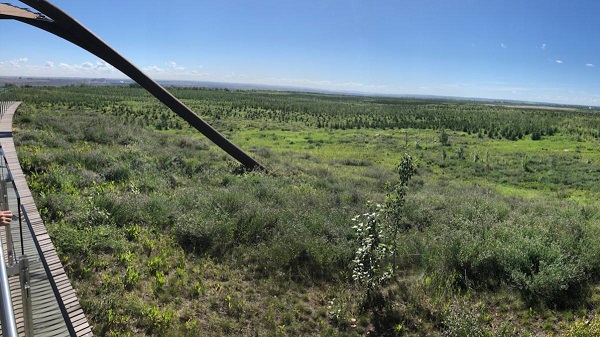
 Canadian Energy Centre2 days ago
Canadian Energy Centre2 days agoAlberta oil sands legacy tailings down 40 per cent since 2015
-

 Economy2 days ago
Economy2 days agoTrump opens door to Iranian oil exports
-

 International23 hours ago
International23 hours agoTrump transportation secretary tells governors to remove ‘rainbow crosswalks’





